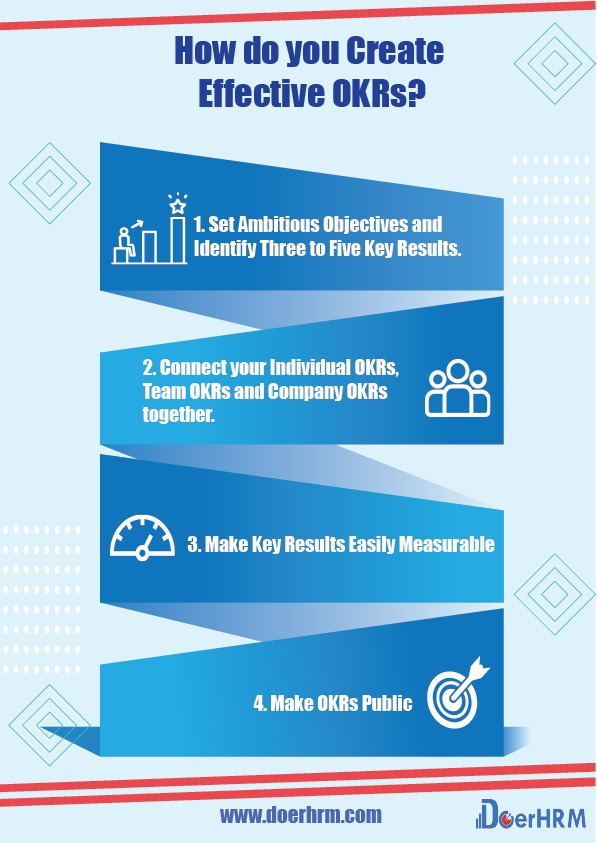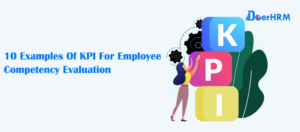Objectives and Key Results, more popularly known as OKRs, is a goal tracking system that has been used by companies like Google, Linkedin, and Intel.
The term Objectives and Key Results was first coined by former Intel CEO and President Andrew Grove. In his book High Output Management, he said that there are only two questions that need to be answered when it comes to tracking goals:
1. Where do I want to go?
2. How do I know that I’ll get there?
To learn how OKRs can help take your team to the next level, enroll in our OKR Mastery course and earn a 35% commission when you invite others to join this course!
These two questions became the central pieces of OKR. The answer to the first question should determine your objectives, while the second question should be answered by quantifiable outcomes known as key results.
Venture capitalist John Doerr first learned about OKR when he was an employee of Intel under the leadership of Andrew Grove. When Doerr’s firm invested in Google, he shared the OKR framework to the founders of Google, who then adopted and implemented it across the company back when they only had 40 employees. Now, with over 100,000 employees, OKR is still widely used at Google.
Why do Companies use OKR?

Like Grove mentioned in his book, OKRs help employees and organizations identify their vision and the steps needed to turn that vision into reality. Companies cannot reach their ambitious goals without the work of employees who will take them there.
According to a Gallup poll, almost 85% of employees worldwide do not feel engaged in their work. When executed well, OKRs can solve this issue. By allowing employees to set their own OKRs based on company OKRs, they can feel more engaged and connected to their work. When employees are more engaged, they also become more productive. OKRs are therefore beneficial for both employers and employees.
How do you Create Effective OKRs?

OKRs will only be effective if organizations and employees take the time to properly evaluate their Objectives and Key Results. Here are five steps to help you set up effective OKRs, with real-life examples from the world’s most successful companies.

1. Set Ambitious Objectives and Identify Three to Five Key Results.
Swipely, now known as Upserve, used OKRs to grow their business into the hundred million-dollar company that it is today. In 2013, the number of their employees grew more than 2.5 times, and the company’s Founder and CEO at that time, Angus Davis, knew that he had to do something to keep his team motivated and united in the middle of its rapid growth.
He recommends to first set a high-level objective that is connected to the company’s bigger goals, and then setting three to five key results. In an interview with First Round, he provides an example of an objective and three key results.:
Employee: Paul, an engineer at Swipely
Objective: Ship [X] feature to increase engagement
Key Results:
- Deliver alpha version to targeted devices for alpha testing feedback from 10 early customers by [exact date]
- Provide screenshots to support marketing launch of the app by [exact date]
- Release beta version by [exact date]
Google also encourages their teams to make their objectives as ambitious as possible. In fact, Google thinks that objectives should feel somewhat uncomfortable. If objectives are easily attainable, they are not fully utilizing the employees’ and company’s maximum potential.
2. Connect your Individual OKRs, Team OKRs and Company OKRs together.
When Jeff Weiner took over Linkedin, he introduced OKR as a way to manage teams. He said that a great leader makes it clear to his employees how they can all come together to achieve the company’s goals. It is up to the executive teams then to fully identify and communicate the values of the company to its employees.
From there, he encourages each team to come up with their own goals that align with the company values. He then encourages individual employees to use OKRs to think about an ambitious goal they want to achieve over a period of time. These individual OKRs, of course, should be tied to the team OKRs. These individual and team OKRs are a way for an organization to know the role that each employee and team plays in taking the organization where it wants to be.
3. Make Key Results Easily Measurable
As you can see from Davis’ example above, each key result can easily be measured. The first key result, for example, is easily quantifiable through the exact number of early customers Paul needs to get alpha testing feedback from, and the exact time that he needs to do it by.
In a Medium article, writer Niket gives an example of how Uber could use OKR and set easily measurable key results:
Company: Uber
Objective: Increase geographic coverage of drivers
Key Results:
- Increase Uber’s coverage in San Francisco to 100%
- Increase coverage for all active cities to 75%
- Decrease pickup time to less than 10 mins in any coverage area during peak hours of usage
Google also encourages their teams to make their objectives as ambitious as possible. In fact, Google thinks that objectives should feel somewhat uncomfortable. If objectives are easily attainable, they are not fully utilizing the employees’ and company’s maximum potential.
As you can see, each key result is specific and measurable by metrics such as percentages and precise number of minutes.
The examples provided so far have all been tech companies. But OKRs can be adopted by companies of any industry, and of any size. Let’s take Starbucks for example. A sample OKR for Starbucks could be:
Team: Marketing Team at Starbucks
Objective: Increase customer satisfaction
Key Results:
- Launch a new rewards program by March 1
- Introduce 10 new beverages to the menu by June 30
- Release a randomized customer satisfaction survey by December 30 and obtain a positive customer rating of 80%
4. Make OKRs Public
Swipely founder Angus Davis also emphasized the importance of making sure that everyone can see the company’s and everyone’s individual OKRs. This is also endorsed by Google, who has shared their OKR best practices publicly for all organizations to adopt.
This improves communication as it ensures that both employees and employers are on the same page. It also reminds employees every day of the progress they are making towards their goals.
The great thing about OKRs is that they are not set in stone. They can be changed after a certain period of time, as the company’s needs and goals also change. Check-ins can provide an opportunity to change OKRs if necessary.
Having regularly scheduled check-ins and assessments of OKRs will not only keep teams updated with their progress, but will also help in making sure that OKRs are executed effectively.






